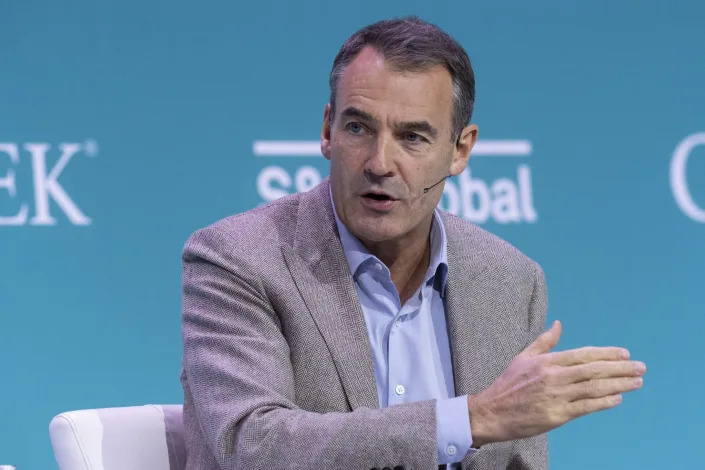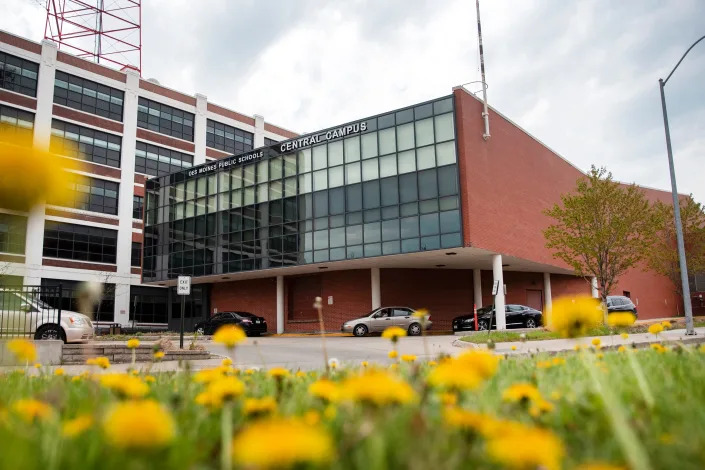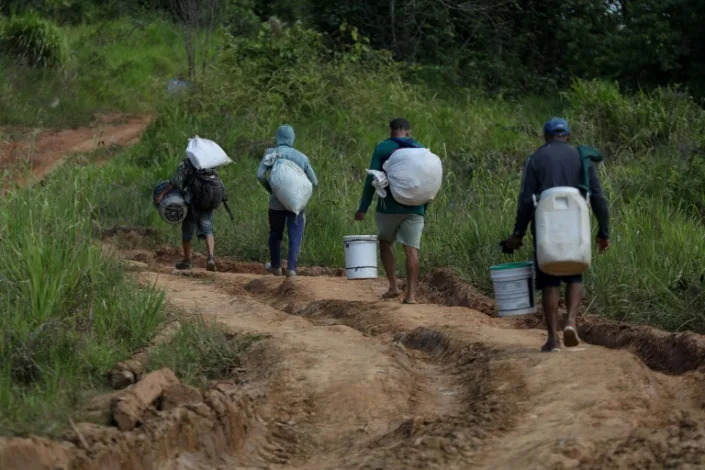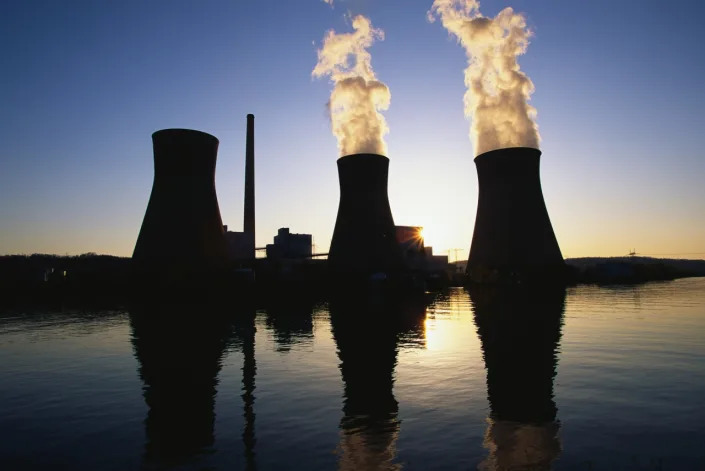BP: We’re Making Lots of Money on Oil, so Screw the Climate
Molly Taft
Tue, February 7, 2023

Photo: Kirsty Wigglesworth (AP)
BP is raking in a huge amount of cash these days on oil, so it wants you to ignore all those lofty promises it made about the climate just a few years ago.
On Tuesday, the company became the latest oil major to post some truly jaw-dropping returns from its fourth financial quarter. Thanks in part to the global energy crisis kicked off by the conflict in Ukraine, oil producers have been rolling in dough for the past year, with companies like ExxonMobil and Chevron have posting record profits. BP is no exception. On Tuesday, the company said its 2022 profits were about $27.7 billion, more than twice the profit it posted in 2021. Not bad!
And thanks to that big ol’ number, BP says it’s gonna slow down its progress on the whole climate action thing. In 2020—as the industry was experiencing a crisis where oil prices plunged so low that they briefly went negative—BP said it would reduce carbon emissions from its oil and gas production by 35% to 40% by 2030. Hidden in the financial news released Tuesday, however, is a new target: The company has downgraded its goal to between 20% and 30% over the same time period, allowing it to keep churning out more of that sweet, sweet oil that’s so in demand right now after oil prices hit enormous highs this summer.
“At the end of the day, we’re responding to what society wants,” CEO Bernard Looney told reporters about the changes on Tuesday. In a seeming attempt to counterbalance the bad news, Looney emphasized in a LinkedIn post that the company would be investing an additional $8 billion in initiatives “like bioenergy and EV-charging that can help people and businesses go lower carbon sooner.”
BP has long been at the forefront of oil companies trying on green marketing for size. The climate- and renewables-related goals it rolled out in 2020, announced under the title “From International Oil Company to Integrated Energy Company,” are among some of the most aggressive put forward by any oil and gas company. (That isn’t saying much, given how none of the net-zero promises put forward by any oil majors are actually worth a damn when it comes to the science, but at least BP is trying slightly harder than, say, Exxon.)
This isn’t the first time BP has walked back on green promises. In the early 2000s, the company formerly known as British Petroleum decided to rebrand as Beyond Petroleum, overhauling its logo and investing in a slew of solar and wind projects. The company ended up quietly selling off those renewable assets in order to pay for two pricy oil spills, including the 2010 Deepwater Horizon disaster. Oop!
Tuesday’s announcement emphasizes the danger of allowing the fox to run the henhouse when it comes to the energy transition. In recent years, sensing a sea change in how society views their products, oil majors have been positioning themselves as a core part of the solution, coining a raft of new terminology to greenwash their efforts and investing heavily in technological solutions to carbon emissions. The science is clear, however: In order to avert climate disaster, the world needs to stop using fossil fuels as quickly as possible. As BP’s announcement clearly illustrates, as long as there’s still money to be made in fossil fuels, oil companies can’t be trusted to do what needs to be done.
And while Looney may be falsely attributing BP’s drive to earn money from oil on what “society wants,” the rent may yet come due for companies like his.
“This is a temporary situation,” Nick Butler, who used to be a senior executive at BP and is now a visiting professor at Kings College, told the BBC. “Oil and gas prices are going down and the windfall these companies are making won’t last.”
BP vowed to help set the oil and gas industry on a greener path. Many who bought in now feel betrayedMolly Taft
Tue, February 7, 2023

Photo: Kirsty Wigglesworth (AP)
BP is raking in a huge amount of cash these days on oil, so it wants you to ignore all those lofty promises it made about the climate just a few years ago.
On Tuesday, the company became the latest oil major to post some truly jaw-dropping returns from its fourth financial quarter. Thanks in part to the global energy crisis kicked off by the conflict in Ukraine, oil producers have been rolling in dough for the past year, with companies like ExxonMobil and Chevron have posting record profits. BP is no exception. On Tuesday, the company said its 2022 profits were about $27.7 billion, more than twice the profit it posted in 2021. Not bad!
And thanks to that big ol’ number, BP says it’s gonna slow down its progress on the whole climate action thing. In 2020—as the industry was experiencing a crisis where oil prices plunged so low that they briefly went negative—BP said it would reduce carbon emissions from its oil and gas production by 35% to 40% by 2030. Hidden in the financial news released Tuesday, however, is a new target: The company has downgraded its goal to between 20% and 30% over the same time period, allowing it to keep churning out more of that sweet, sweet oil that’s so in demand right now after oil prices hit enormous highs this summer.
“At the end of the day, we’re responding to what society wants,” CEO Bernard Looney told reporters about the changes on Tuesday. In a seeming attempt to counterbalance the bad news, Looney emphasized in a LinkedIn post that the company would be investing an additional $8 billion in initiatives “like bioenergy and EV-charging that can help people and businesses go lower carbon sooner.”
BP has long been at the forefront of oil companies trying on green marketing for size. The climate- and renewables-related goals it rolled out in 2020, announced under the title “From International Oil Company to Integrated Energy Company,” are among some of the most aggressive put forward by any oil and gas company. (That isn’t saying much, given how none of the net-zero promises put forward by any oil majors are actually worth a damn when it comes to the science, but at least BP is trying slightly harder than, say, Exxon.)
This isn’t the first time BP has walked back on green promises. In the early 2000s, the company formerly known as British Petroleum decided to rebrand as Beyond Petroleum, overhauling its logo and investing in a slew of solar and wind projects. The company ended up quietly selling off those renewable assets in order to pay for two pricy oil spills, including the 2010 Deepwater Horizon disaster. Oop!
Tuesday’s announcement emphasizes the danger of allowing the fox to run the henhouse when it comes to the energy transition. In recent years, sensing a sea change in how society views their products, oil majors have been positioning themselves as a core part of the solution, coining a raft of new terminology to greenwash their efforts and investing heavily in technological solutions to carbon emissions. The science is clear, however: In order to avert climate disaster, the world needs to stop using fossil fuels as quickly as possible. As BP’s announcement clearly illustrates, as long as there’s still money to be made in fossil fuels, oil companies can’t be trusted to do what needs to be done.
And while Looney may be falsely attributing BP’s drive to earn money from oil on what “society wants,” the rent may yet come due for companies like his.
“This is a temporary situation,” Nick Butler, who used to be a senior executive at BP and is now a visiting professor at Kings College, told the BBC. “Oil and gas prices are going down and the windfall these companies are making won’t last.”
Gizmodo

Vivienne Walt
Tue, February 7, 2023
When BP appointed Bernard Looney as CEO exactly three years ago, climate activists believed they might finally have an ally within Big Oil, after decades of deep distrust of the energy industry. Looney—Irish, from a poor farming family—broke the mold of Britain’s century-old company in more ways than one: He vowed to turn BP into a green energy giant, by drastically cutting oil and gas production and plowing billions into renewables. “This is the first oil major to walk the walk,” Mark van Baal, founder of the Amsterdam-based shareholder activist organization Follow This, told Fortune at the time. “If one oil major breaks ranks, and shareholders reward them for it, others will follow.”
That optimism shattered on Tuesday, when BP became the latest oil supermajor to report record-high profits for 2022—while announcing, at the same time, a sharp rollback of its climate targets.
Thanks in part to soaring gas and oil prices over the past year, BP’s underlying profits more than doubled in 2022, to $27.7 billion. (Its exit from Russia, where it had a 19.75% stake in Rosneft, cost the company $24 billion, leaving it with a paper loss after taxes of $2.5 billion.)
Dramatic rollback
Despite the bumper year, however, Looney announced BP would dramatically roll back his key climate promise, which he made in 2020. That year, Looney pledged 40% cut in carbon emissions from BP’s oil and gas production by 2030. He argued that those dramatic shifts were urgent. “Without action, it is a rather bleak future for the world,” he told Fortune in 2020, echoing a central point that environmentalists had made for years.
But on Tuesday, he said that BP’s drop in emissions would likely be a more modest 20% to 30%. “We need continuing near-term investment into today’s energy system,” Looney said, adding that the energy transition has to be “an orderly one.” The company also said it would invest about $1 billion a year in oil and gas production—an apparent about-face from Looney’s earlier statement that the company would steadily reduce its involvement in fossil fuels.
To climate activists, that felt like a knife in the back. “BP’s aim to reduce absolute emissions from their own production was one of the few tangible targets in the entire oil industry,” van Baal told Fortune on Tuesday. “They made enormous profits, and they’re back in their comfort zone,” he says. “They want to hang on to their old business model as long as possible, because it is profitable.”
'Back in their comfort zone'
Van Baal says he will push for far-reaching cuts in fossil-fuel production, in resolutions that Follow This will put forward during Big Oil’s annual shareholder meetings this spring. In a meeting in late 2019, Looney persuaded Van Baal to withdraw a similar resolution, saying he wanted to work with him to roll out climate action within BP, according to Van Baal. Activists believe such resolutions have prompted oil companies to set carbon-emission targets for fear of alienating investors, who increasingly regard climate change as a major risk factor.
BP’s earlier commitments suggested that “the pressure climate-conscious investors were putting on the industry was having an impact,” said Kathy Mulvey, of the Union of Concerned Scientists, an environmental group in Cambridge, Mass. Now, she says, she believes “BP’s climate pledges have been cynical, empty, and opportunistic.”
'Energy trilemma'
Looney argues that the Ukraine war and rising inflation showed how important it was to have a steady flow oil and gas supplies. In a LinkedIn post, he said BP would focus its oil and gas investments on low-cost production. “The world wants and needs energy that’s secure and affordable, as well as lower carbon,” he said, calling it “the energy trilemma.”
Environmentalists said Looney was sugar-coating his rollback of climate commitments. “I’m sorry to say this is a huge disappointment,” Helena Farstad, cofounder and director of London-based climate branding company This is Agency, said in a response on LinkedIn. “BP has demonstrated its lack of leadership.”
This story was originally featured on Fortune.com



















